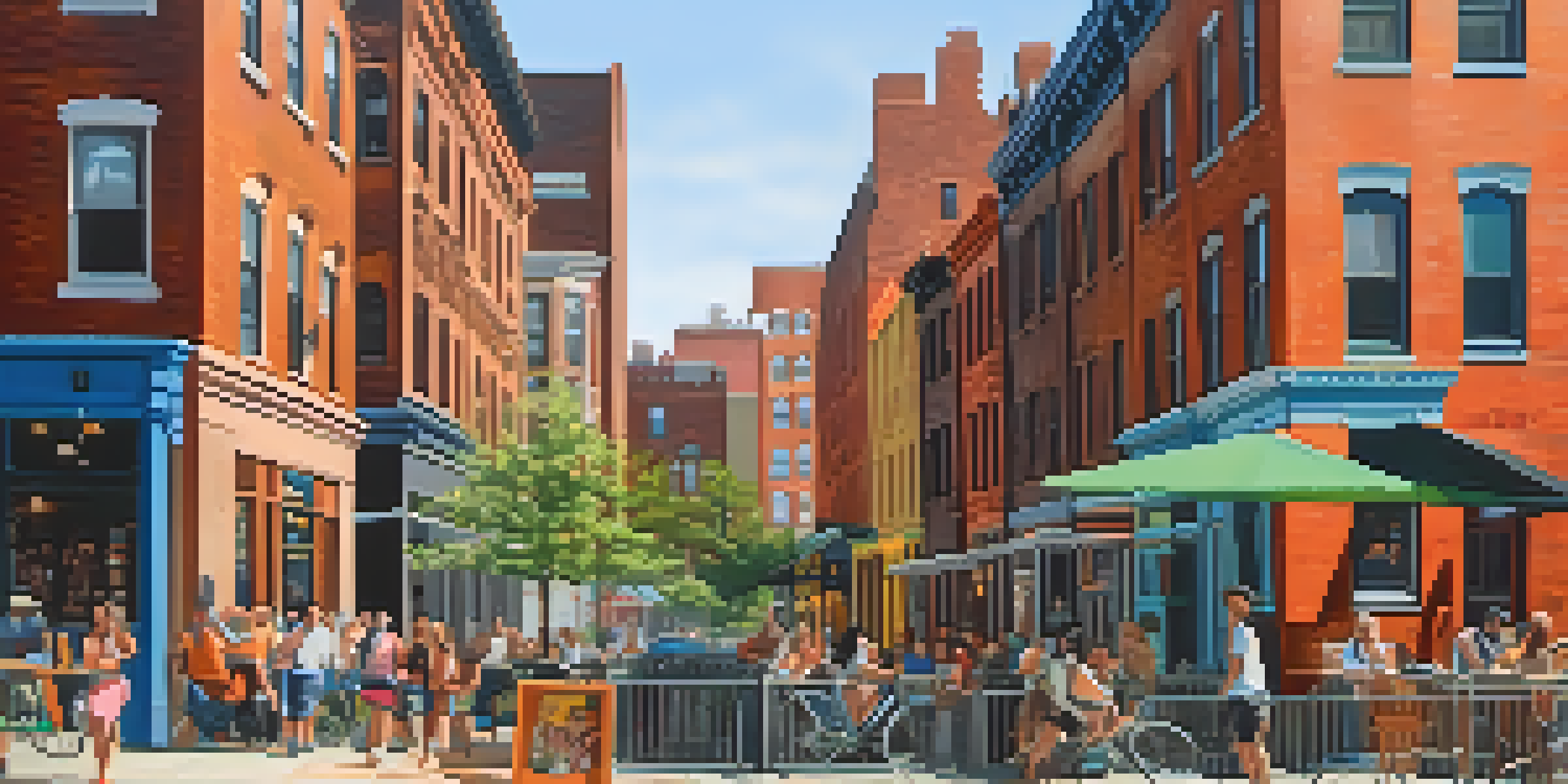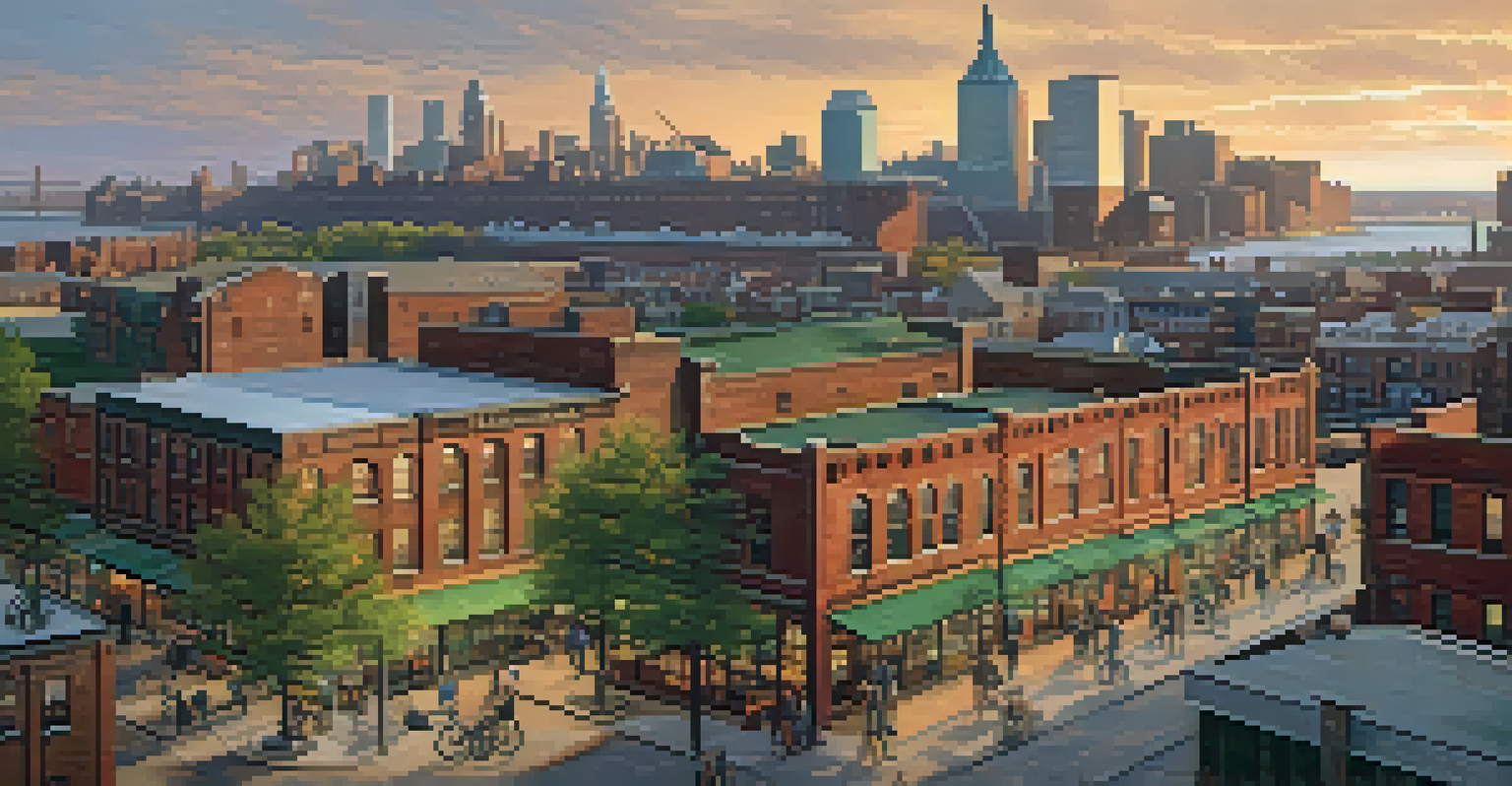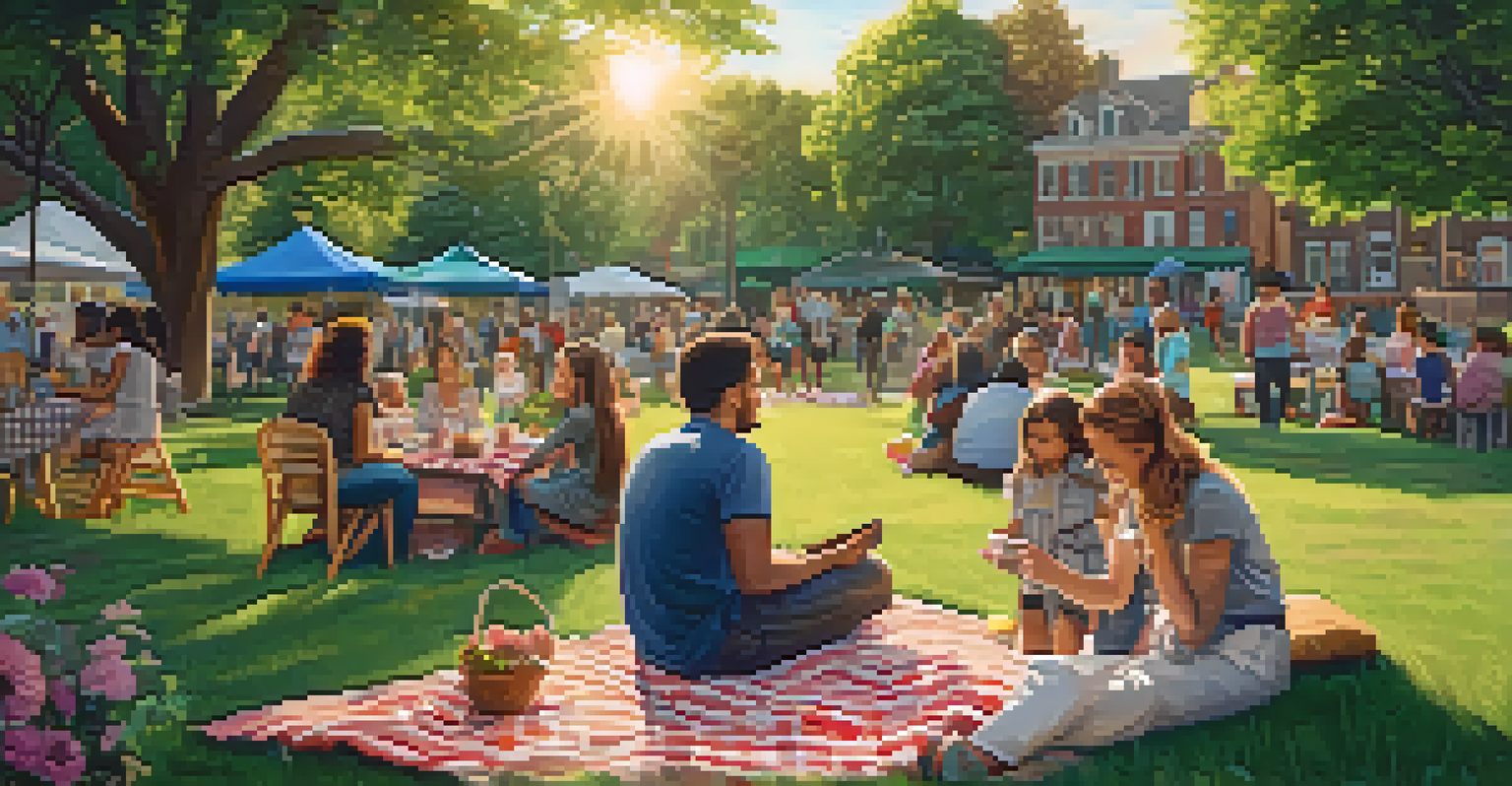The Gentrification of Williamsburg: A Neighborhood Analysis

Understanding Gentrification: A Brief Overview
Gentrification refers to the process where a neighborhood undergoes urban renewal, attracting wealthier residents and often displacing existing communities. This phenomenon can breathe new life into neglected areas but can also lead to rising costs of living, pushing out long-time residents. In Williamsburg, we see a classic example of this complex dynamic playing out, with its rich history intertwined with modern development.
Gentrification is a complex process that can bring both opportunity and displacement. It's vital to find a balance that honors the existing community while allowing for growth.
The roots of gentrification can often be traced back to economic shifts, changes in demographics, and cultural trends. As artists and young professionals initially flock to Williamsburg for its affordable rent and vibrant culture, developers soon follow, seeking to capitalize on the area’s growing popularity. This influx of investment leads to rising property values and rents, creating a ripple effect that can change the community's fabric.
Understanding the mechanics of gentrification helps us grasp its implications. In Williamsburg, the narrative of revitalization isn’t just about new businesses and trendy cafes; it’s also about the struggles of those who call the neighborhood home. Balancing the needs of new and existing residents is a challenge that cities face when grappling with gentrification.
Historical Background of Williamsburg's Transformation
Historically, Williamsburg has been a melting pot of cultures, home to various immigrant communities. In the mid-20th century, the area faced decline, as industries moved out, leaving behind abandoned warehouses and a struggling economy. However, the arrival of artists in the 1990s marked the beginning of a significant transformation, as they sought affordable spaces for their work and creativity.

As artists settled in, they began to attract attention, which led to an influx of young professionals looking for an alternative to Manhattan's high prices. The unique character of Williamsburg, characterized by its street art, music scene, and indie shops, started to catch the eye of developers. This sparked a wave of investment that would eventually reshape the neighborhood’s landscape.
Gentrification Displaces Long-Time Residents
As Williamsburg gentrifies, rising rents and property values are forcing many long-term residents to move, disrupting established communities.
Today, remnants of Williamsburg's industrial past coexist with sleek condos and upscale eateries. This juxtaposition tells a story of change, where history meets modernity, yet it also raises questions about who benefits from this evolution and at what cost to the original community.
Economic Impacts of Gentrification in Williamsburg
The economic landscape of Williamsburg has transformed dramatically over the last two decades. Once known for its affordability, the neighborhood has become a hotspot for high-end retail and dining, appealing to wealthier residents. This shift has led to increased property values and a booming local economy, but it has also created challenges for long-time residents who can no longer afford to live there.
A neighborhood is more than just its physical space; it's the connections between the people who live there. When those connections are disrupted, the community's identity is at stake.
As new businesses cater to affluent clientele, many traditional shops and services have been pushed out. The local economy becomes polarized, with a stark divide between the needs of new residents and those of the existing community. This economic pressure can lead to a loss of local culture and identity, as unique establishments that once defined Williamsburg are replaced by chain stores.
While gentrification can bring investment and job opportunities, it is crucial to address the needs of all community members. Ensuring that economic growth is inclusive can help mitigate the adverse effects of gentrification, allowing for a vibrant, diverse neighborhood that honors its roots while embracing the future.
Social Changes: Community Dynamics and Displacement
With gentrification often comes significant social change, and Williamsburg is no exception. The influx of wealthier residents brings a shift in community dynamics, altering relationships between neighbors and changing the social fabric. Long-time residents may feel alienated in their own neighborhoods, as new cultural norms and lifestyles emerge.
Displacement is a harsh reality that many face during gentrification. As rents rise, families and individuals who have lived in Williamsburg for generations may be forced to relocate, losing their homes and connections to the community. This loss can be devastating, as it disrupts social networks and diminishes the neighborhood's diversity.
Economic Growth vs. Local Culture
While gentrification brings economic development and investment, it often threatens the unique cultural identity of neighborhoods like Williamsburg.
Addressing these social challenges requires a concerted effort from local government, developers, and the community. Initiatives that promote affordable housing and community engagement can help ensure that the voices of existing residents are heard. Building bridges between new and old residents can foster a sense of belonging for everyone.
Cultural Shifts: The Art and Identity of Williamsburg
Williamsburg has long been celebrated for its vibrant arts scene, which played a pivotal role in its initial revitalization. However, as the neighborhood gentrifies, the essence of this cultural identity faces challenges. Rising rents often push out artists and creatives, who are essential to the unique character that draws people to the area.
The transformation of local art spaces, from galleries to music venues, reflects broader changes in the community. While new establishments may bring fresh talent, they often cater to a more affluent audience, potentially sidelining the original voices that made Williamsburg a cultural hub. This shift raises questions about the authenticity of the artistic identity that once thrived there.
Maintaining a balance between commercial interests and artistic expression is crucial for preserving Williamsburg's character. Supporting local artists and fostering inclusive spaces can help bridge the divide, ensuring that creativity continues to flourish amidst the changes.
Community Responses: Activism and Resilience
In response to the challenges posed by gentrification, many Williamsburg residents have banded together to advocate for their community. Grassroots movements and local organizations work tirelessly to raise awareness about the impacts of displacement and push for policies that protect affordable housing. This activism is a testament to the resilience of the community and its commitment to preserving its identity.
Residents have organized events, rallies, and discussions to bring attention to their struggles and needs. By fostering dialogue among various stakeholders, they aim to create solutions that benefit everyone, not just the newcomers. This collaborative spirit showcases the power of community in facing adversity and seeking equitable growth.
Community Activism for Inclusivity
Residents of Williamsburg are actively advocating for affordable housing and policies that ensure the voices of all community members are heard.
Ultimately, the fight against gentrification is about more than just preserving a neighborhood; it's about ensuring that all voices are heard. The collective efforts of community members emphasize the importance of solidarity and the belief that a neighborhood can thrive while honoring its diverse history.
Looking Ahead: The Future of Williamsburg
As Williamsburg continues to evolve, the question remains: what does the future hold for this iconic neighborhood? The challenge lies in balancing development with the needs of existing residents, ensuring that the community remains inclusive and vibrant. With ongoing discussions about affordable housing and local business support, there is hope for a more equitable future.
Planning initiatives that incorporate input from all stakeholders can help shape a future that honors Williamsburg's rich history while embracing change. Encouraging mixed-income housing and supporting small businesses can create a more balanced community that reflects the diversity of its residents. This approach not only benefits individuals but also enhances the neighborhood's overall vitality.

Ultimately, the future of Williamsburg will depend on the choices made today. By fostering collaboration and prioritizing inclusivity, there is potential for a neighborhood that thrives economically while preserving the unique culture that has defined it for generations.